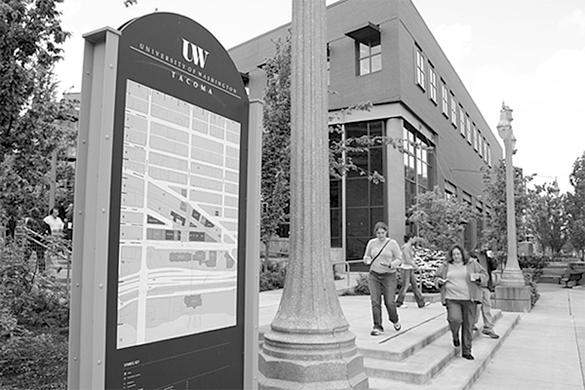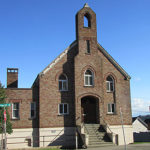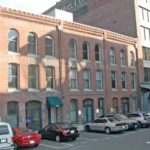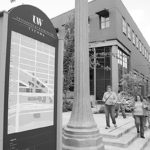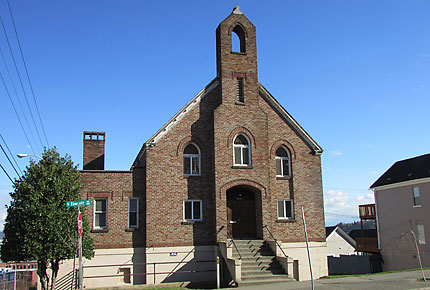If the University of Washington Tacoma wants to meet rising enrollment demands from students, it’s going to have to look to history — specifically, the underutilized and historic buildings it already owns.
That was the message from UW Tacoma officials Tuesday at City Hall during a presentation to Tacoma City Council on the school’s master plan, which serves as a framework for campus growth and development.
According to Harlan Patterson, UW Tacoma‘s Vice Chancellor for Finance & Administration, approximately 4,300 students are enrolled at the university. That figure is expected to nearly double, to 8,000 students, by 2020. The projection means the downtown Tacoma school, which occupies a number of former historic warehouses in Tacoma’s Union Depot/Warehouse Historic District, will grow at a rate that exceeds its existing facilities. Over the next five to seven years, the university plans to rehabilitate and renovate more of the old buildings it already owns in order to meet the demand.
Patterson highlighted two projects that will help meet that goal.
The former Japanese Methodist Episcopal Church, built in 1929 and located at 1901 Fawcett Avenue, was sold to the university in 1999 and was converted into the 11,000 square foot Whitney Arts Center earlier this year.
The former Tacoma Paper & Stationery Building, which is located in the 1700 block of Jefferson Avenue and dates back to the early-1900s, is the last of UW Tacoma‘s “legacy warehouses,” according to Patterson. The school has received funding for the design portion of the building renovation, which is expected to cost between $30 million and $35 million, and plans to complete that work next year, Patterson told councilmembers. In 2015, UW Tacoma officials will ask the Legislature for $20 million to fund a portion of the construction. “This one has to get torn down to the timbers,” Patterson said Tuesday, citing seismic concerns and hazardous materials abatement. “It is a costly project.” If funding is secured, construction would begin in late-2015, and the building would be occupied in 2017.
Other buildings that could be renovated include the Swiss-Wild complex, built in the early-1900s and located along a stretch of the 1900 block of Jefferson Avenue, which is underutilized, with three-quarters of the buildings “not occupied and rotting,” according to Patterson; and the McDonald-Smith Building, constructed in the 1890s and located at 1932 Pacific Avenue, which could be brought up to modern usability standards, according to Patterson.
Patterson noted that funding sources have shifted over the years. Six years ago, the Legislature provided 70 per cent of the funding, while student tuition provided 30 per cent of the funding. “Our funding model has basically changed,” said Patterson. “Right now, 70 per cent comes from tuition. When we get done doing this, it will be 80 per cent tuition, 20 per cent from the state. Tuition dollars are paying for operations and future development. That fundamentally is a different paradigm from how we got here today.”
Most councilmembers expressed their support for the school and the impact it has had on downtown Tacoma since the campus opened in its current location 16 years ago.
“I’m very bullish on your plans,” said Tacoma City Councilmember Robert Thoms.
“A lot of these things, if we put all these pieces together over the next five to seven years, we’re going to double the campus,” added Patterson.
To read the Tacoma Daily Index‘s complete and comprehensive coverage of the University of Washington Tacoma’s master plan, click on the following links:
- Tacoma City Council to discuss UW Tacoma master plan (Tacoma Daily Index, October 11, 2013)
- Learn more about UW Tacoma’s future development plans (Tacoma Daily Index, November 26, 2012)
- UW Tacoma closer to final master plan (Tacoma Daily Index, October 15, 2008)
- UW Tacoma master plan leads city council study session agenda (Tacoma Daily Index, October 13, 2008)
- More students, downtown greenspace part of UWT master plan revision (Tacoma Daily Index, August 14, 2008)
- Congressional update, UWT master plan focus of Tacoma City Council study session (Tacoma Daily Index, August 11, 2008)
- UW Tacoma will host public forum to discuss campus master plan (Tacoma Daily Index, January 15, 2008)
- UW Tacoma overview shows good news, future challenges (Tacoma Daily Index, June 19, 2002)
Todd Matthews is editor of the Tacoma Daily Index and recipient of an award for Outstanding Achievement in Media from the Washington State Department of Archaeology and Historic Preservation for his work covering historic preservation in Tacoma and Pierce County. He has earned four awards from the Society of Professional Journalists, including third-place honors for his feature article about the University of Washington’s Innocence Project; first-place honors for his feature article about Seattle’s bike messengers; third-place honors for his feature interview with Prison Legal News founder Paul Wright; and second-place honors for his feature article about whistle-blowers in Washington State. His work has also appeared in All About Jazz, City Arts Tacoma, Earshot Jazz, Homeland Security Today, Jazz Steps, Journal of the San Juans, Lynnwood-Mountlake Terrace Enterprise, Prison Legal News, Rain Taxi, Real Change, Seattle Business Monthly, Seattle magazine, Tablet, Washington CEO, Washington Law & Politics, and Washington Free Press. He is a graduate of the University of Washington and holds a bachelor’s degree in communications. His journalism is collected online at wahmee.com.
